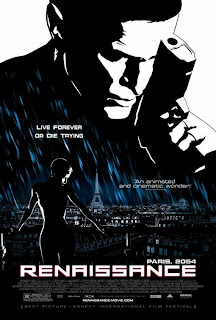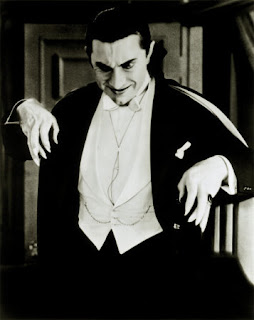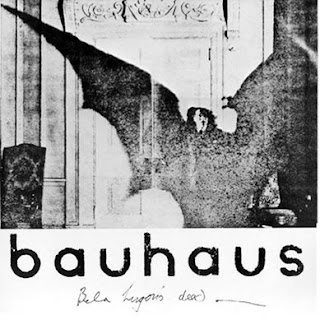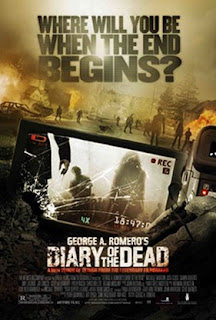.jpg)
reVIEW (47)
RENAISSANCE
Paris, 2054.
Young and extremely brilliant researcher Ilona Tasuiev is abducted, and her employer, the Avalon Corporation (“Your friend. For life.”) is desperate to recover her. Enter Lt. Barthélémy Karas, a cop only too willing to bend—or break—the rules to get the job done, and you have the basic set-up for Christian Volckman’s neo-noir animated film, Renaissance.
Executed via motion capture, in the stark contrast of chiaroscuro, this is one of those gorgeously-realized sci-fi futurescapes that pulls you into its environs with startling ease. The downside of that, of course, is that the narrative has to work doubly hard to be worthy of the production’s awesome visual palette.
To be fair, there is a story here, complete with cautionary underpinnings; I’ve long believed the best sci-fi stories are the cautionary ones.
Where Renaissance fumbles a tad though is the pacing of its narrative, which is slightly uneven, making its 105-minute running time feel vaguely longish. Still, if you’re patient with your cinema, Renaissance has a nice—if not sunshiny-happy—pay-off.
Renaissance is also guilty of servicing some of the genre tropes a little too slavishly; Karas getting involved with Ilona’s sister Bislane is both painfully predictable and achieved with an off-handed and almost insulting convenience. (Though the neat reversals pulled off by that aforementioned pay-off may arguably be more than enough to balance out the script’s more clichéd moments.)
And there is the matter of Renaissance’s voice cast.
Almost always, when it comes to a foreign animated film, I will insist on watching the English-subtitled version. (With a foreign live-action film, always.)
The English dubbing on Renaissance though, is exceptional, not at all displaying the overly theatrical—and in some cases, childish—flourishes you usually find in dubbed animation.
And there are notable names here, mind: Daniel Craig, Ian Holm, Jonathan Pryce, Catherine McCormack. The talent at the other end of the mic is top-notch, certainly worthy of Renaissance’s eye-widening visuals.
Ultimately, Renaissance may be slightly flawed, but it’s nonetheless an exceptional piece of animated sci-fi that furthered the cause of stylized storytelling in modern cinema, a wave that began with Kerry Conran’s Sky Captain and the World of Tomorrow and barreled on with the mainstream success of such entries as Sin City and 300.* (Closer to Renaissance’s animated home of course, are Richard Linklater’s Waking Life and A Scanner Darkly.)
Renaissance also won the Feature Film Award at Annecy 2006 and the European Fantasy Film Grand Prize at Fantasporto 2007, so that should count for something, yes?
* Fans of the digitally-created artificial environs of this brand of storytelling are advised to check out the Wachowskis’ Speed Racer (review in Archive), and can also look forward to Frank Miller’s upcoming take on Will Eisner’s The Spirit, opening on Christmas Day 2008.
(Renaissance OS courtesy of impawards.com.)
RENAISSANCE
Paris, 2054.
Young and extremely brilliant researcher Ilona Tasuiev is abducted, and her employer, the Avalon Corporation (“Your friend. For life.”) is desperate to recover her. Enter Lt. Barthélémy Karas, a cop only too willing to bend—or break—the rules to get the job done, and you have the basic set-up for Christian Volckman’s neo-noir animated film, Renaissance.
Executed via motion capture, in the stark contrast of chiaroscuro, this is one of those gorgeously-realized sci-fi futurescapes that pulls you into its environs with startling ease. The downside of that, of course, is that the narrative has to work doubly hard to be worthy of the production’s awesome visual palette.
To be fair, there is a story here, complete with cautionary underpinnings; I’ve long believed the best sci-fi stories are the cautionary ones.
Where Renaissance fumbles a tad though is the pacing of its narrative, which is slightly uneven, making its 105-minute running time feel vaguely longish. Still, if you’re patient with your cinema, Renaissance has a nice—if not sunshiny-happy—pay-off.
Renaissance is also guilty of servicing some of the genre tropes a little too slavishly; Karas getting involved with Ilona’s sister Bislane is both painfully predictable and achieved with an off-handed and almost insulting convenience. (Though the neat reversals pulled off by that aforementioned pay-off may arguably be more than enough to balance out the script’s more clichéd moments.)
And there is the matter of Renaissance’s voice cast.
Almost always, when it comes to a foreign animated film, I will insist on watching the English-subtitled version. (With a foreign live-action film, always.)
The English dubbing on Renaissance though, is exceptional, not at all displaying the overly theatrical—and in some cases, childish—flourishes you usually find in dubbed animation.
And there are notable names here, mind: Daniel Craig, Ian Holm, Jonathan Pryce, Catherine McCormack. The talent at the other end of the mic is top-notch, certainly worthy of Renaissance’s eye-widening visuals.
Ultimately, Renaissance may be slightly flawed, but it’s nonetheless an exceptional piece of animated sci-fi that furthered the cause of stylized storytelling in modern cinema, a wave that began with Kerry Conran’s Sky Captain and the World of Tomorrow and barreled on with the mainstream success of such entries as Sin City and 300.* (Closer to Renaissance’s animated home of course, are Richard Linklater’s Waking Life and A Scanner Darkly.)
Renaissance also won the Feature Film Award at Annecy 2006 and the European Fantasy Film Grand Prize at Fantasporto 2007, so that should count for something, yes?
* Fans of the digitally-created artificial environs of this brand of storytelling are advised to check out the Wachowskis’ Speed Racer (review in Archive), and can also look forward to Frank Miller’s upcoming take on Will Eisner’s The Spirit, opening on Christmas Day 2008.
(Renaissance OS courtesy of impawards.com.)

+1.jpg)
+blog.jpg)
+18.jpg)
.jpg)
.jpg)





+blog.jpg)
+1.jpg)
+2.jpg)




.jpg)
+blog.jpg)
+blog.jpg)




+blog.jpg)
+3.jpg)
+dvd+2.jpg)
+1.jpg)
+3.jpg)





+speed.jpg)
+racer+x.jpg)
+speed.jpg)
+flags.jpg)
+racer+x+2.jpg)




.jpg)
.jpg)
+blog.jpg)
+(b-d)+blog.jpg)
+(imp)+1.jpg)
+(styd)+3.jpg)
+(styd)+4.jpg)
+(styd)+5.jpg)